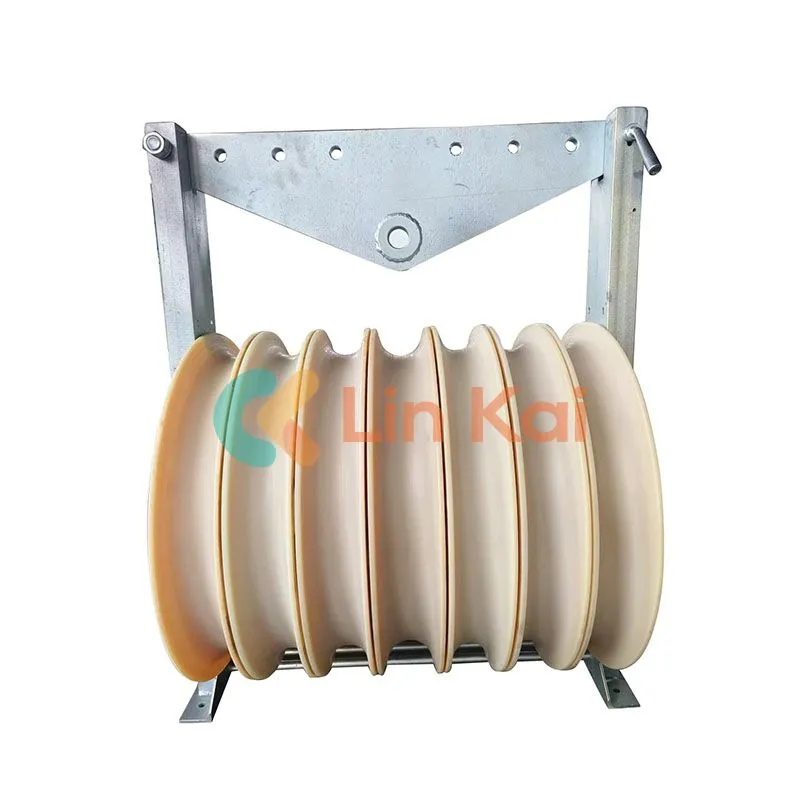What is the role of Stringing Blocks in reducing cable damage?
2024-12-06
Stringing blocks play a crucial role in reducing cable damage during the installation of power lines and communication cables. These specialized tools are designed to ensure the smooth and safe passage of cables while minimizing mechanical stress and abrasion. Here’s how they achieve this:
1. Even Distribution of Cable Weight
Stringing blocks support the weight of the cable as it is pulled into position, preventing excessive tension or localized stress. This even distribution of weight reduces the likelihood of cable deformation or damage.

2. Smooth Guiding of Cables
The grooved surfaces of stringing blocks are designed to guide cables along their intended path, minimizing friction. This prevents the cable's outer insulation or jacket from being worn down during installation.
3. Reduced Friction and Drag
Stringing blocks are often made with materials like nylon, aluminum, or steel, which have low friction coefficients. Some are also equipped with bearings to allow smooth rotation. These features significantly reduce drag as the cable moves, lowering the risk of wear and tear.
4. Protection Against Sharp Bends
Cables can be damaged by sharp bends during installation. Stringing blocks have rounded grooves that maintain an appropriate bend radius, protecting the cable from kinking or internal damage.
5. Shock Absorption
During installation, sudden movements or tension spikes can occur. Stringing blocks absorb and distribute these forces, protecting the cable from abrupt stress that could lead to damage.
6. Adaptability to Terrain
Stringing blocks are available in various designs to suit different terrains and structures, such as suspension, anchor, or angle types. Their versatility ensures that cables are handled carefully even in challenging environments.
Applications in Reducing Damage:
- Overhead Power Lines: They help in stringing high-tension cables without scraping or overloading them.
- Fiber Optic Cables: Stringing blocks ensure delicate fiber optic cables are installed without crushing or fracturing the fibers.
- Communication Lines: They safeguard the integrity of insulation and conductors during installation.
Using stringing blocks significantly enhances the longevity and reliability of cables by preventing installation-related damage, saving costs on maintenance and repairs.


